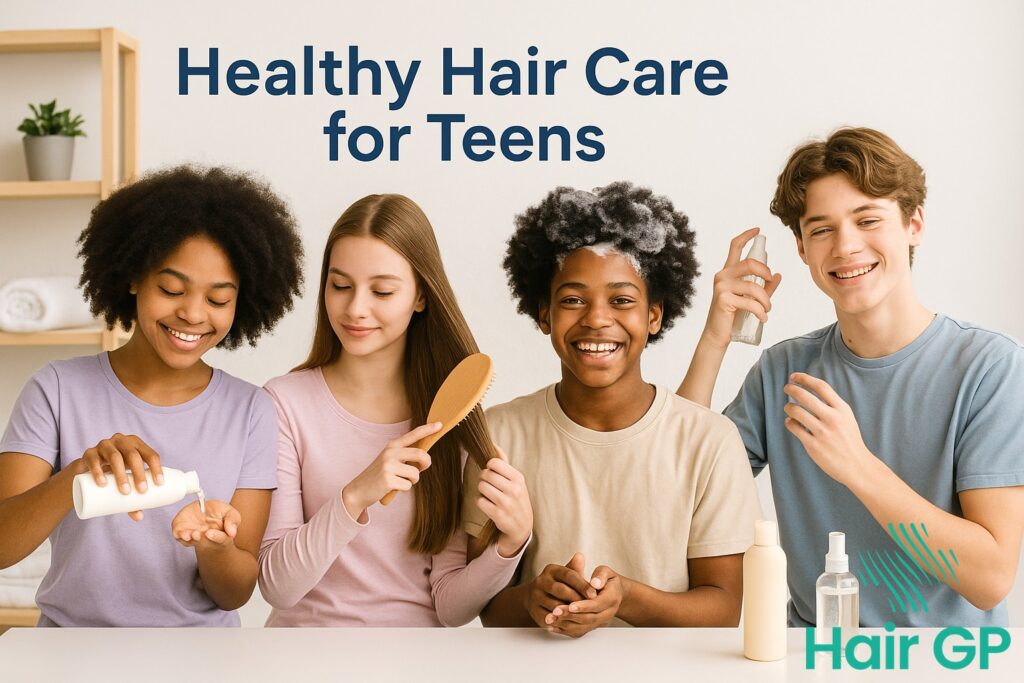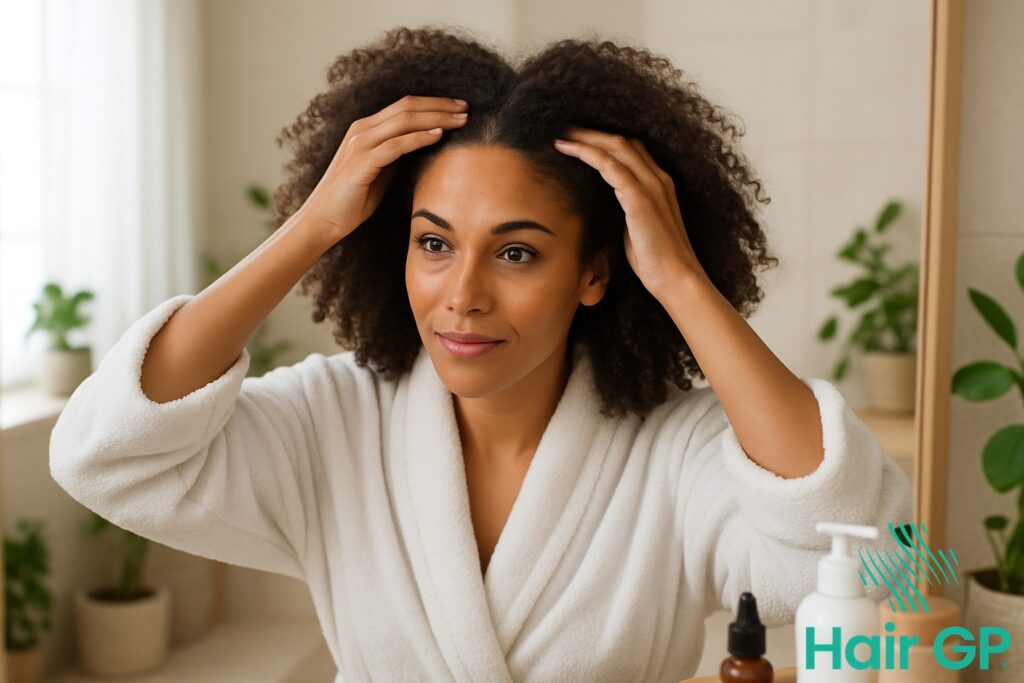Introduction
The teenage years bring significant physical and emotional changes, and hair care often becomes a new priority as teens develop their personal style and independence. Teaching teens about healthy hair growth and proper care habits during this crucial developmental period sets the foundation for lifelong hair health and confidence.
During puberty, hormonal fluctuations dramatically impact hair characteristics, leading to changes in texture, oil production, and growth patterns that can confuse and frustrate young people. Understanding these natural transformations helps teens adapt their routines appropriately and avoid common mistakes that can cause long-term damage.
Establishing healthy hair care habits early provides teens with the knowledge and skills they need to maintain beautiful, healthy hair throughout their lives. This comprehensive guide addresses the unique challenges teens face while providing practical, age-appropriate solutions that fit their busy lifestyles.
We’ll explore how puberty affects hair and scalp health, helping teens understand the science behind hair growth and type identification. You’ll discover how to create effective daily routines that balance thoroughness with convenience, plus learn to select safe, suitable products that support healthy hair growth without harsh chemicals.
The guide also covers common teen hair concerns like excess oiliness, dryness, and styling damage, offering proven solutions and prevention strategies. Finally, we’ll teach proper techniques for washing, drying, and styling that protect hair health while allowing teens to express their personal style safely and confidently.
Key Takeaways – TL/DR
- Teenage years are critical for developing lifelong healthy hair care habits due to hormonal changes and increased personal responsibility
- Understanding individual hair type is essential for choosing age appropriate products and creating effective routines
- Simple, consistent daily habits like gentle washing and proper detangling prevent most common teen hair problems
- Teaching teens about heat styling safety and chemical treatments helps prevent long-term hair damage
Understanding Teen Hair Changes During Puberty
Puberty triggers significant hormonal fluctuations that directly impact hair growth and scalp health, creating noticeable changes in teens’ hair characteristics. During adolescence, increased androgen production stimulates sebaceous glands, leading to elevated oil production in both the scalp and hair [1]. This hormonal surge often results in greasier hair that requires more frequent washing and adjusted scalp care routines.
The hair growth cycle itself undergoes modifications during puberty, with many teens experiencing changes in hair texture, thickness, and growth patterns. Previously straight hair may develop waves or curls, while naturally curly hair might become coarser or change its curl pattern [2]. These texture transformations occur as hair follicles mature and respond to hormonal influences, making it essential for teens to adapt their hair health practices accordingly.
Additionally, the increased sebum production can contribute to scalp issues like dandruff or mild dermatitis if proper scalp care isn’t maintained. Understanding these natural changes helps teens develop realistic expectations and implement appropriate healthy hair routines. Parents can support their teenagers by explaining that these transformations are normal developmental processes and helping them establish effective hair growth and maintenance practices that will promote long-term hair health throughout their adolescent years and beyond.

Building Hair Care Foundations: Types and Growth Science
Understanding hair fundamentals empowers teens to make informed decisions about their healthy hair care routines. Knowledge of hair type and natural growth patterns forms the essential foundation for developing effective, personalized approaches to maintaining optimal hair health throughout adolescence and beyond.
Identifying Your Teen’s Hair Type
Determining your teen’s hair type involves examining both curl pattern and porosity levels. Hair type classification systems categorize hair from straight (Type 1) to coily (Type 4), with subcategories A, B, and C indicating increasing curl intensity . Visual assessment involves observing hair when wet and air-dried without products to see its natural texture. Porosity testing helps determine how easily hair absorbs and retains moisture – simply drop a clean strand in water and observe whether it floats, sinks slowly, or sinks quickly. Hair density, referring to how many strands grow per square inch, also influences care choices and can be assessed by examining how much scalp shows through parted hair.
How Hair Grows: The Growth Cycle Explained
Hair growth occurs in three distinct phases that directly impact hair health and care strategies. The anagen (growth) phase lasts 2-7 years and determines maximum hair length, while catagen (transition) and telogen (resting) phases last approximately 2-3 weeks and 2-4 months respectively [3]. During normal hair growth, teens typically lose 50-100 strands daily as part of the natural cycle. Factors affecting growth rate include genetics, nutrition, hormonal changes during puberty, and stress levels. Understanding these cycles helps teens recognize that temporary hair loss or changes in growth patterns are often normal developmental processes rather than cause for concern.

Creating an Age-Appropriate Daily Hair Care Routine
Establishing a consistent hair care routine doesn’t have to be complicated or time-consuming for busy teenagers. The key is creating simple daily care habits that fit seamlessly into your existing schedule while providing the foundation for healthy hair growth and maintenance.
Essential Daily Hair Care Steps
Start each morning with gentle detangling using a wide-tooth comb or detangling brush, working from ends to roots to minimize breakage. When washing hair, focus shampoo on the scalp rather than the lengths, using age appropriate products designed for your specific hair type. Most teens need to wash every 2-3 days, though oily hair may require daily cleansing while dry or curly hair benefits from less frequent washing.
Evening routines should include a brief scalp massage using fingertips in circular motions, which stimulates blood flow and promotes healthy growth. For longer hair, create protective nighttime styles like loose braids or silk scrunchies to prevent tangling and friction damage. Consider switching to silk or satin pillowcases to reduce hair breakage while sleeping.
Weekly Deep Care and Maintenance
Incorporate deep conditioning treatments once weekly, focusing on mid-lengths and ends rather than the scalp area. Fine hair needs lighter formulas, while thick or chemically-treated hair benefits from richer, more intensive masks. Use clarifying shampoo once monthly to remove product buildup, especially if you use styling products regularly.
Simple DIY hair masks can be effective and budget-friendly options. Try mixing honey and olive oil for dry hair, or egg whites with lemon juice for oily scalp concerns. Apply these treatments for 15-20 minutes before your regular hair care routine. Remember that consistency matters more than perfection – maintaining these habits will yield better results than occasional intensive treatments.
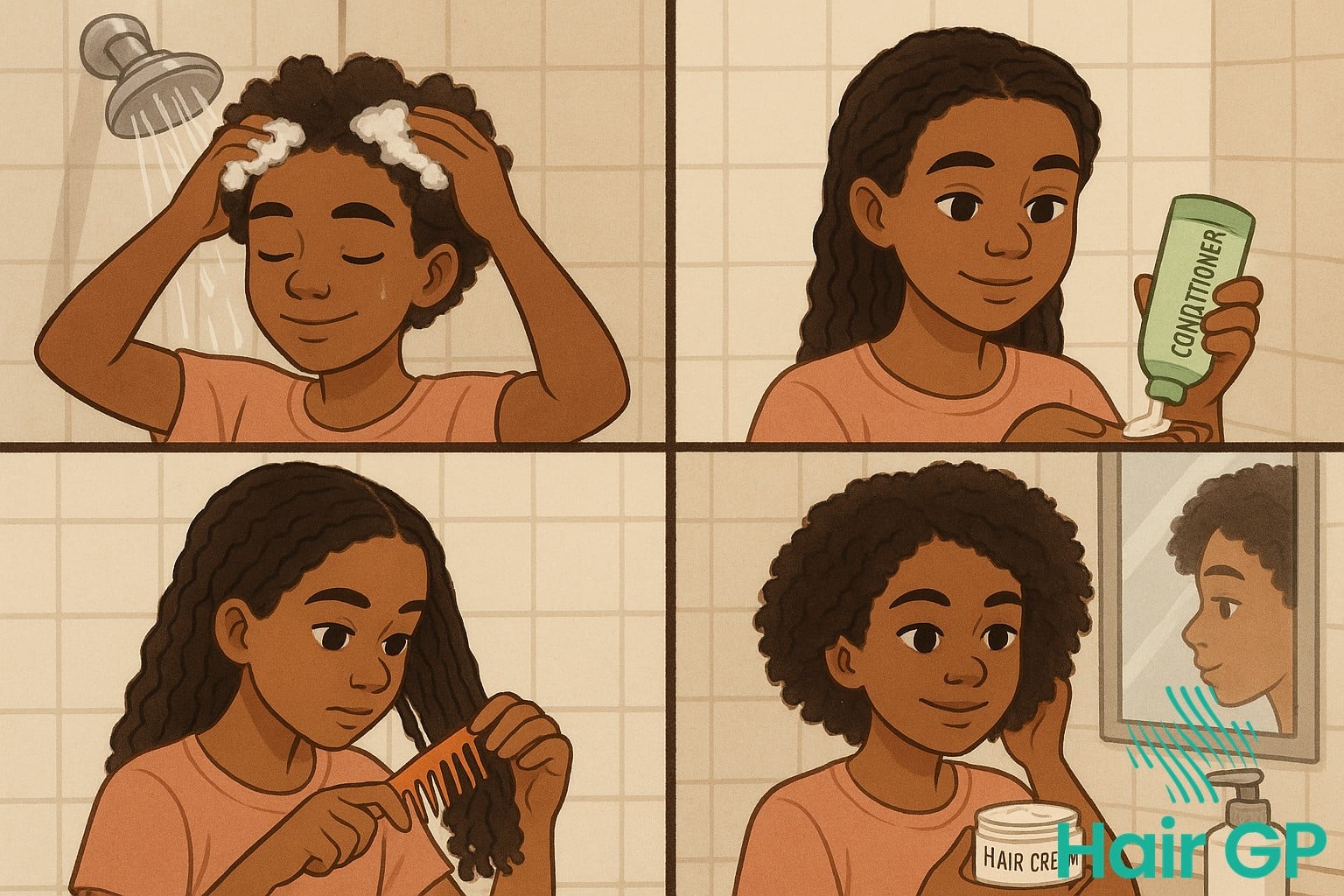
Selecting Safe and Effective Teen Hair Products
Selecting appropriate hair products for teenagers requires careful consideration of ingredient safety and developmental needs. Age appropriate products should prioritize gentle formulations that support natural hair growth without introducing harsh chemicals that can damage developing hair follicles and scalp tissue. Parents and teens should focus on understanding ingredient lists and avoiding products containing sulfates, parabens, and formaldehyde-releasing preservatives, which research indicates can cause scalp irritation and potential long-term damage .
When choosing shampoo and conditioner, teens should match products to their specific hair type and current scalp condition. Those with oily hair benefit from clarifying shampoos used 2-3 times weekly, while teens with dry or chemically-treated hair require moisturizing formulations with natural oils and proteins. The key lies in selecting products with pH-balanced formulas between 4.5-6.5 that maintain the scalp’s natural acid mantle and prevent excessive dryness or irritation.
Leave in conditioner products offer additional protection for teens who frequently style their hair or live in harsh environmental conditions. These products should contain lightweight moisturizing agents like glycerin or hyaluronic acid rather than heavy silicones that can build up over time. Additionally, teens should avoid products with high alcohol content, artificial fragrances, and dyes, which studies show can trigger contact dermatitis and allergic reactions in developing skin [4]. Reading labels carefully and patch-testing new hair products on a small skin area before full use helps prevent adverse reactions and ensures safe, effective hair care routines.
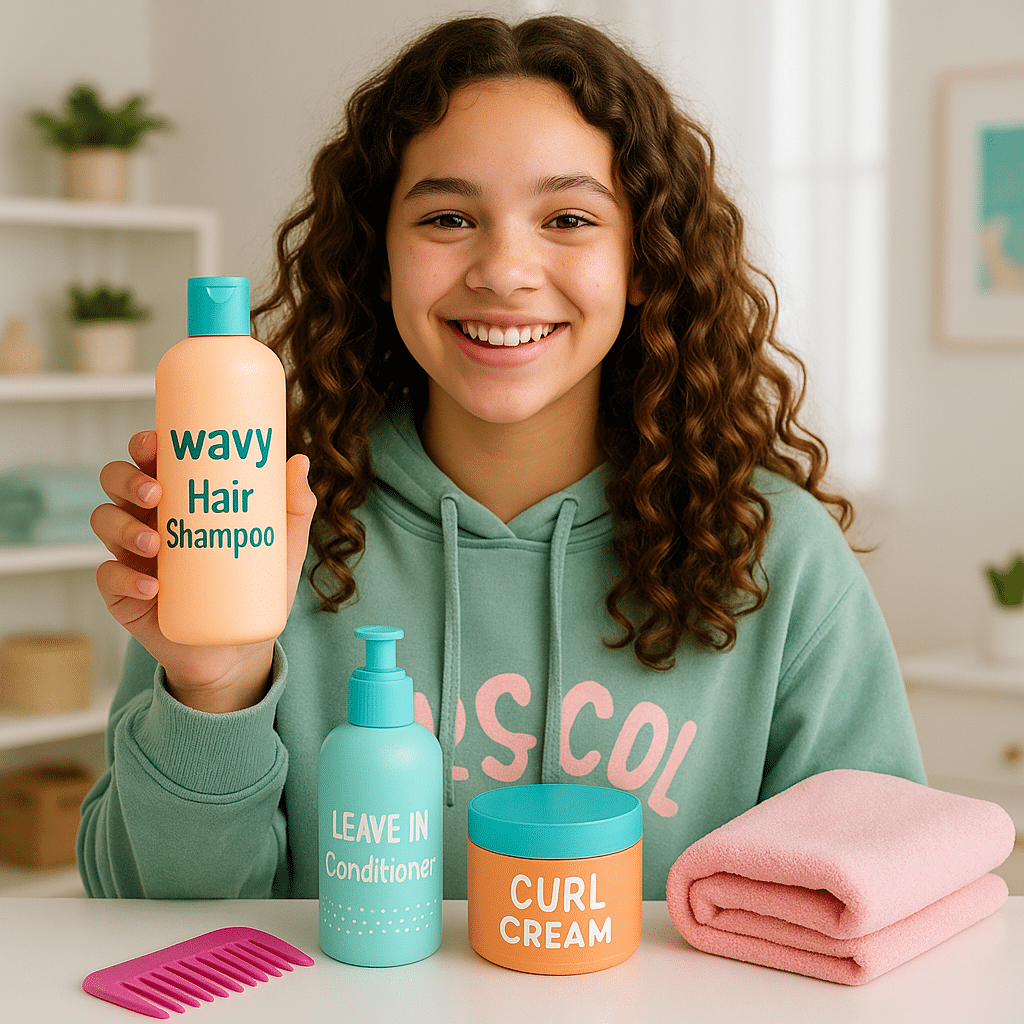
Addressing Common Teen Hair Problems and Concerns
Teen hair problems encompass a wide range of challenges from excessive oiliness and scalp conditions to damage from styling practices. Understanding these common issues and implementing targeted solutions can help teenagers maintain healthy hair while navigating the hormonal changes that often contribute to these concerns.
Managing Oily Hair and Scalp Issues
Hormonal fluctuations during adolescence frequently cause increased sebum production, leading to oily hair and various scalp conditions. Research indicates that seborrheic dermatitis affects approximately 3-5% of adolescents , while other scalp conditions like dandruff are even more prevalent. To manage oily hair effectively, teens should wash their hair every other day using sulfate-free clarifying shampoos designed for oily hair types. Over-washing can actually stimulate more oil production, creating a counterproductive cycle. Incorporating scalp-focused treatments like tea tree oil or salicylic acid-based products can help control excess oil while addressing underlying scalp conditions. Dry shampoo between washes can absorb excess oil without stripping natural protective barriers.
Preventing and Repairing Heat and Chemical Damage
Heat styling tools and chemical treatments are major contributors to hair damage, hair thinning, and persistent frizz among teenagers. Hair loss in adolescents can result from excessive heat exposure and chemical processing [5], making prevention crucial. Always apply heat protectant products before using styling tools, and keep temperatures below 350°F to minimize damage. For existing damage, deep conditioning treatments containing protein and moisture-binding ingredients can help repair weakened hair shafts. Consider air-drying when possible and use microfiber towels to reduce friction-induced breakage. When chemical treatments are desired, space them appropriately and always seek professional guidance to prevent severe hair damage that could lead to permanent hair thinning or loss.
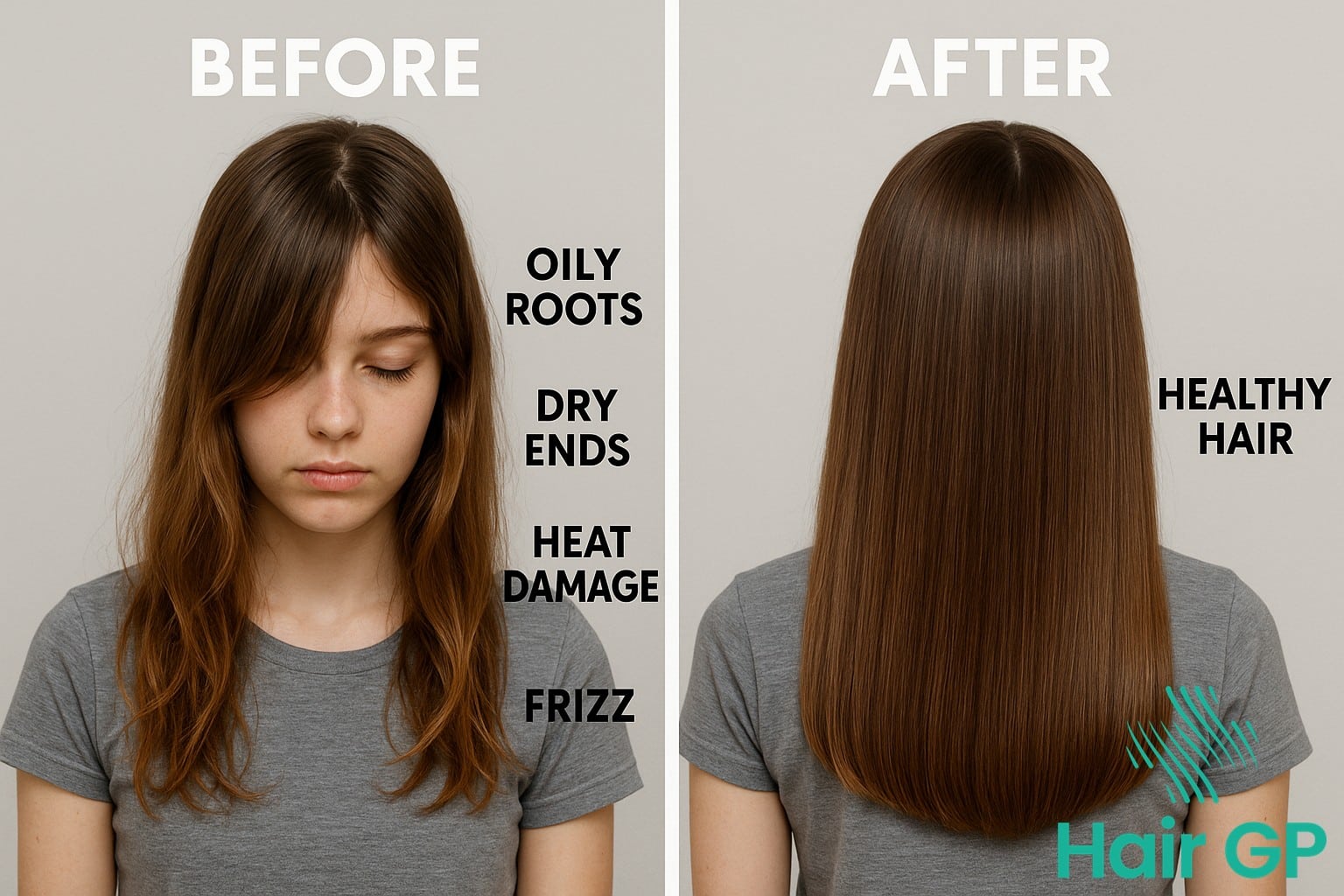
Teaching Proper Hair Care Techniques and Safety
Mastering proper hair care techniques early creates a foundation for lifelong healthy hair habits. Understanding how to properly care for your hair prevents unnecessary damage and promotes natural growth while maintaining your hair’s overall strength and lustrous shine.
Start with gentle washing techniques using lukewarm water rather than hot temperatures that strip away natural oils. Apply shampoo primarily to your scalp, allowing the suds to cleanse your hair lengths as you rinse thoroughly. Follow with conditioner applied from mid-length to ends, avoiding the scalp area to prevent greasiness.
Effective detangling begins with damp hair and a wide-tooth comb or specialized detangling brush. Always start from the bottom sections and work upward, holding hair above the area you’re combing to minimize pulling and breakage. Never brush wet hair aggressively, as it’s most vulnerable when saturated with water.
Heat styling requires careful attention to prevent long-term damage. Always apply a heat protectant product before using styling tools like blow dryers, straighteners, or curling irons. Keep tools moving continuously rather than holding them in one spot, and use the lowest effective temperature setting. Allow hair to cool completely before touching or styling further.
Choose hairstyles that work with your natural texture rather than fighting against it. Tight ponytails and braids can cause breakage along the hairline, so alternate between loose and secure styles. Sleep with hair in a loose braid or satin pillowcase to reduce friction overnight. Regular trims every 6-8 weeks maintain healthy ends and prevent split ends from traveling up the hair shaft.
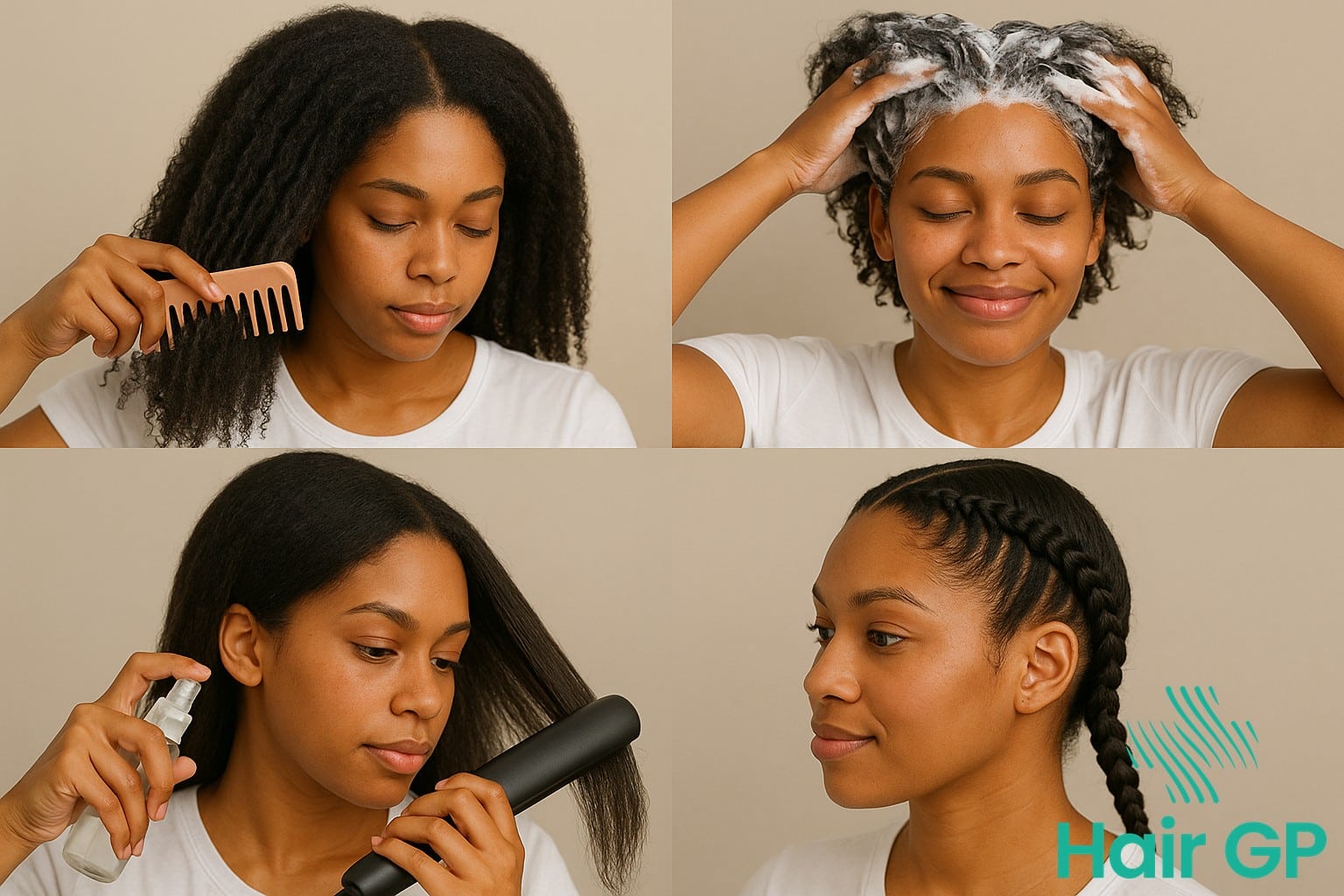
Conclusion
The teenage years represent a critical window for establishing healthy hair care habits that will serve as the foundation for lifelong habits and overall well-being. Teaching teens proper hair care techniques goes far beyond simply maintaining appearance—it’s about building confidence, promoting self esteem, and creating routines that support optimal hair health throughout their lives.
When young people understand the science behind proper hair care and implement consistent daily practices, they develop a deep appreciation for their natural hair texture and learn to work with, rather than against, their unique characteristics. These healthy hair care habits become second nature, eliminating the confusion and damage that often result from misinformation or trendy but harmful practices.
The investment in proper hair education during adolescence pays dividends for decades to come. Teens who master gentle cleansing techniques, protective styling, and appropriate product selection are more likely to maintain strong, healthy hair well into adulthood. They also develop the confidence that comes from understanding their hair’s needs and having the tools to address challenges effectively.
By prioritizing hair health education during these formative years, we empower the next generation to embrace their natural beauty while maintaining the healthy practices that support both physical appearance and emotional well-being.
Frequently Asked Questions
Most teens should wash their hair 2-3 times per week, though those with very oily hair may need daily washing while those with dry or curly hair may only need weekly washing. The key is finding the right balance for your teen’s specific hair type and lifestyle.
No, expensive products aren’t required for healthy teen hair. Focus on gentle, sulfate-free shampoos and moisturizing conditioners appropriate for your teen’s hair type. Many affordable brands offer excellent options for developing healthy hair care habits.
Teens can begin using heat styling tools around age 13-14 with proper education about heat protectants, appropriate temperatures, and limiting frequency. Always use the lowest effective temperature and ensure teens understand the importance of heat protection products.
Some hair shedding is normal during puberty due to hormonal changes. However, if you notice patches of hair loss, significant thinning, or other concerning changes, consult a healthcare provider or dermatologist to rule out underlying conditions.
References
- Mimeault M, Batra SK. Recent insights into the molecular mechanisms involved in aging and the malignant transformation of adult stem/progenitor cells and their therapeutic implications. Ageing Res Rev. 2009. PMID: 19114129
- Sinclair R, Wewerinke M, Jolley D. Treatment of female pattern hair loss with oral antiandrogens. Br J Dermatol. 2005. PMID: 15787815
- Courtois M, Loussouarn G, Hourseau C, Grollier JF. Hair cycle and alopecia. Skin Pharmacol. 1994. PMID: 8003330
- Lim HW, Collins SAB, Resneck JS, Bolognia J, Hodge JA, Rohrer TA et al.. A risk adjustment approach to estimating the burden of skin disease in the United States. J Am Acad Dermatol. 2018. PMID: 29110889
- Vary JC. Selected Disorders of Skin Appendages--Acne, Alopecia, Hyperhidrosis. Med Clin North Am. 2015. PMID: 26476248

